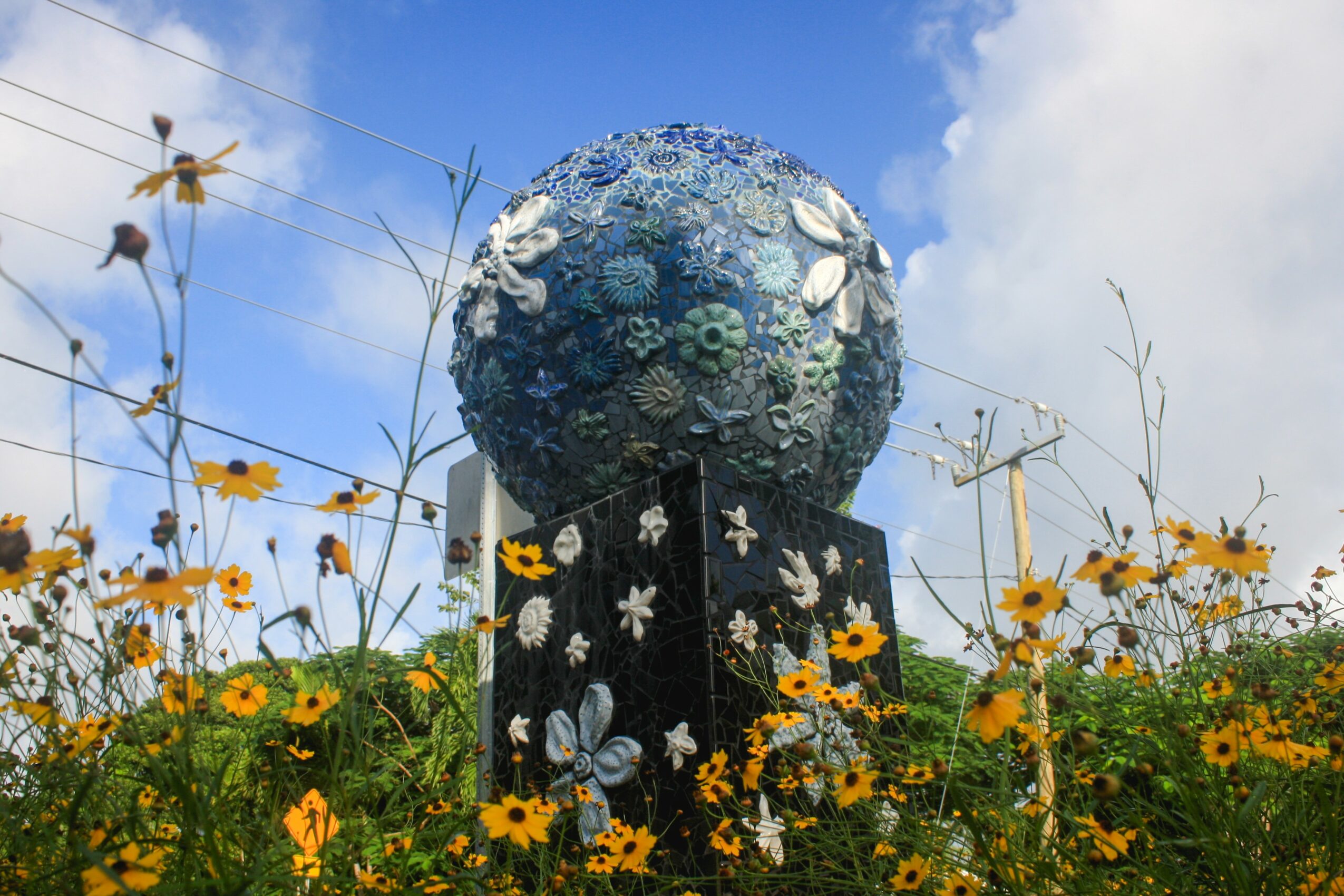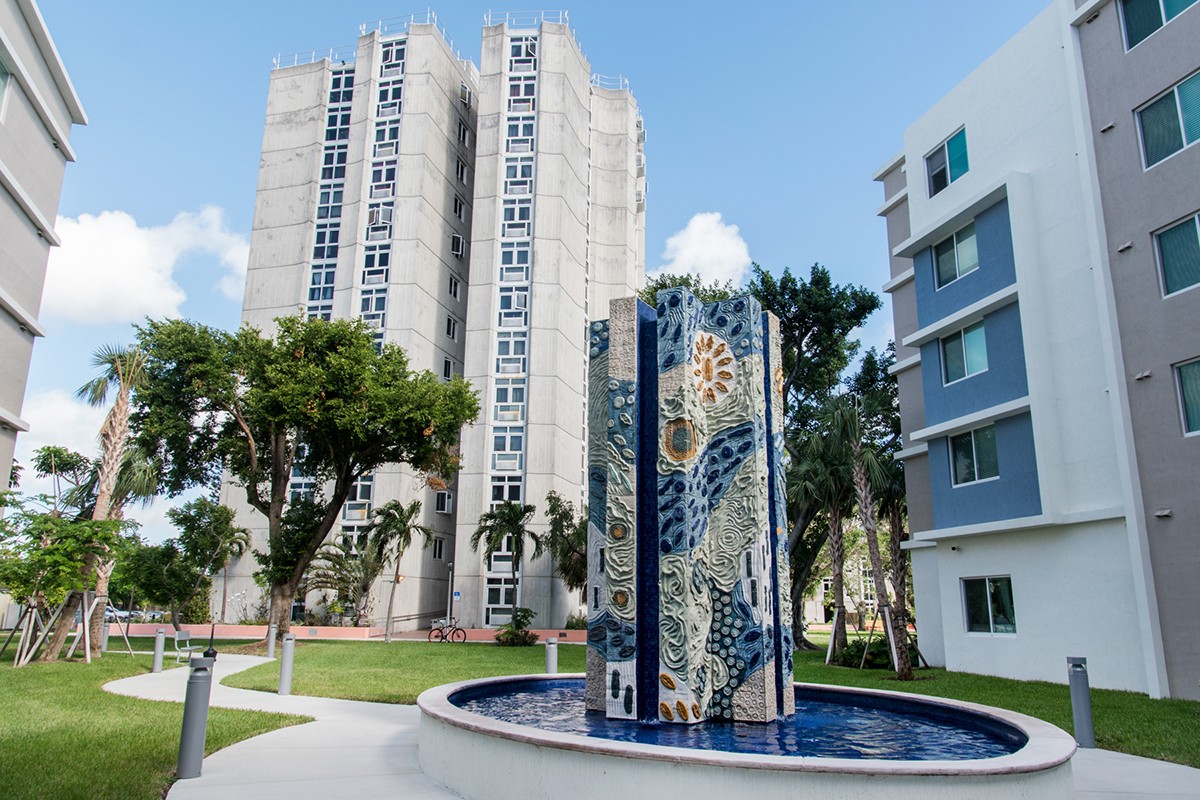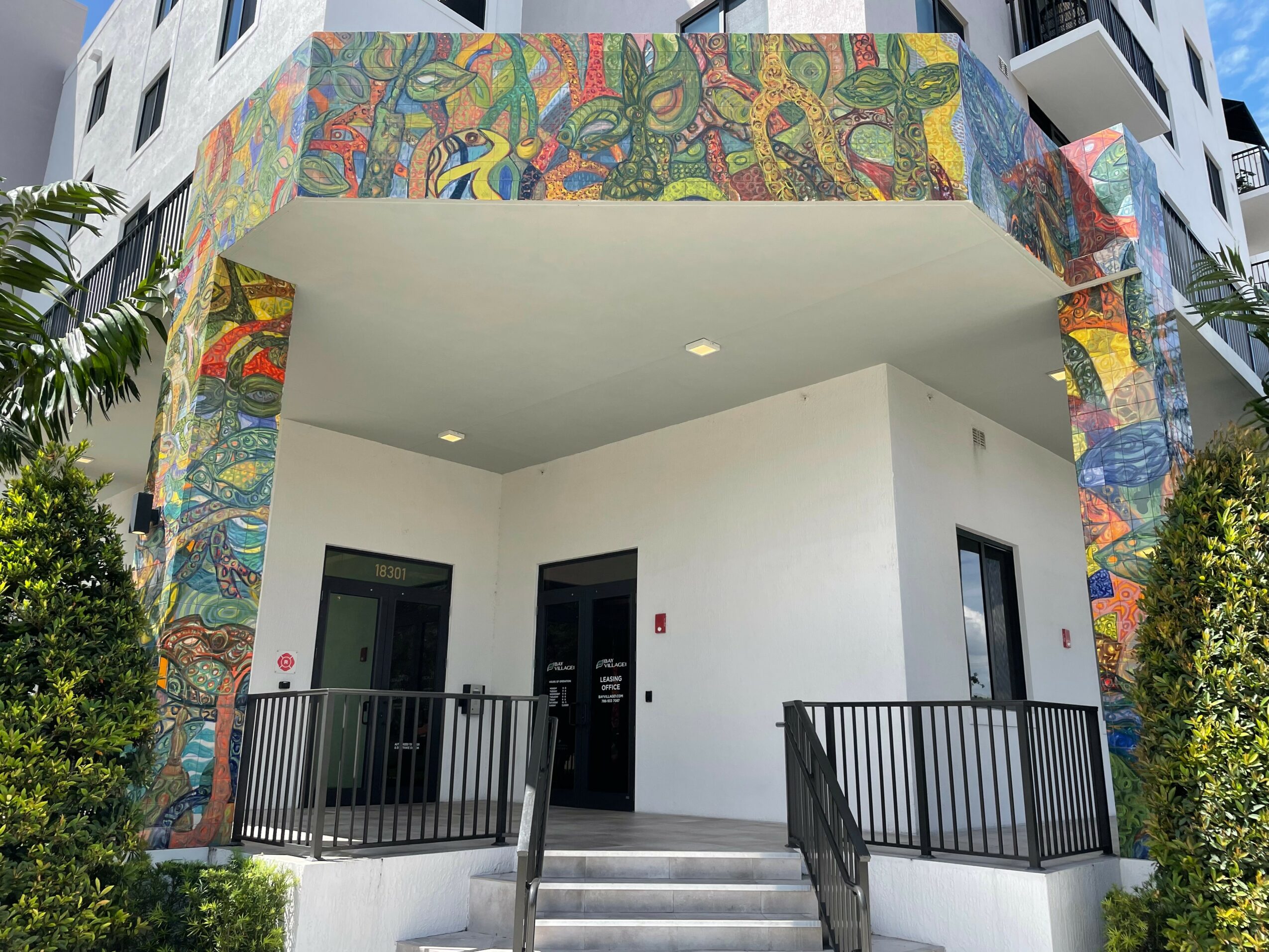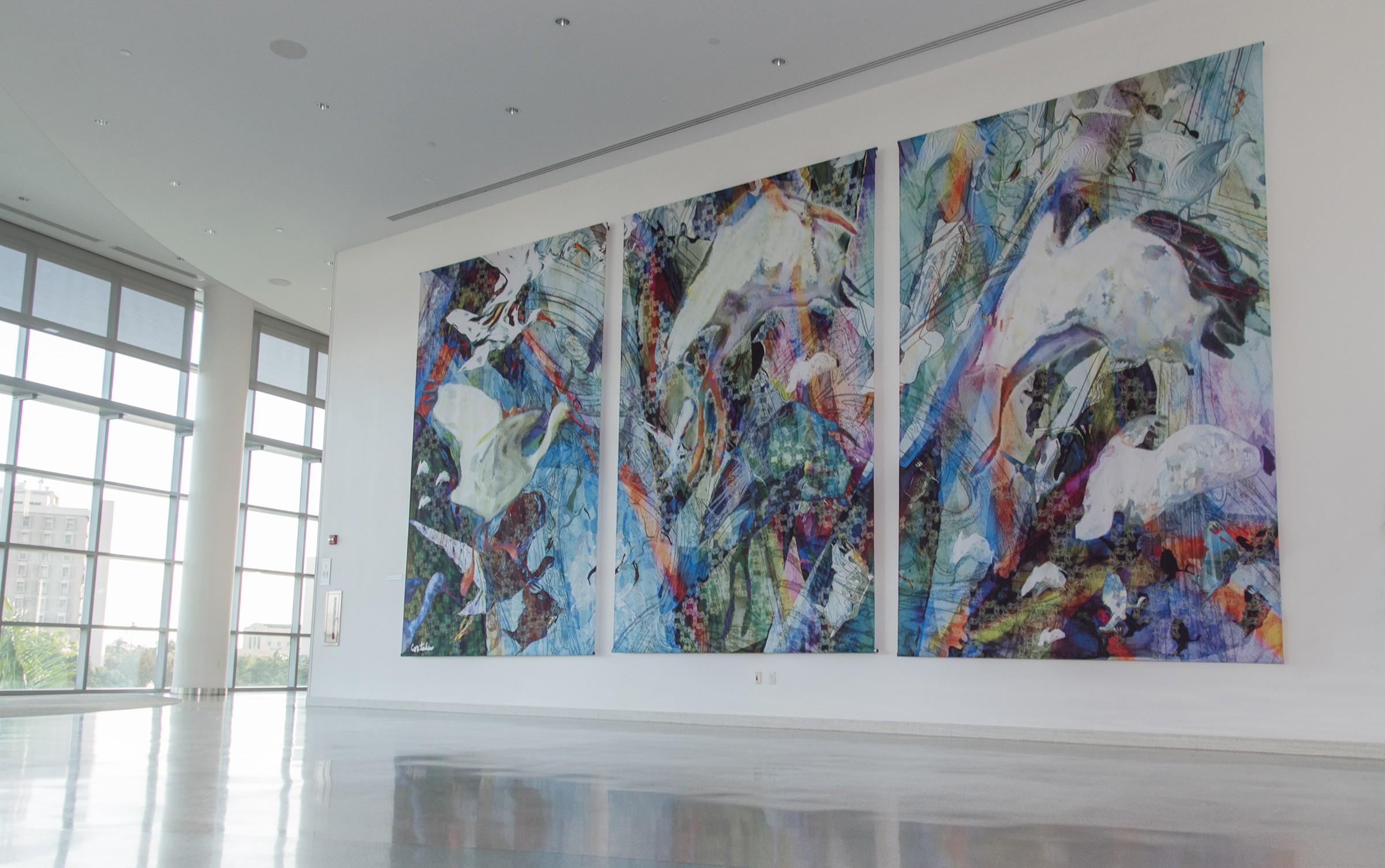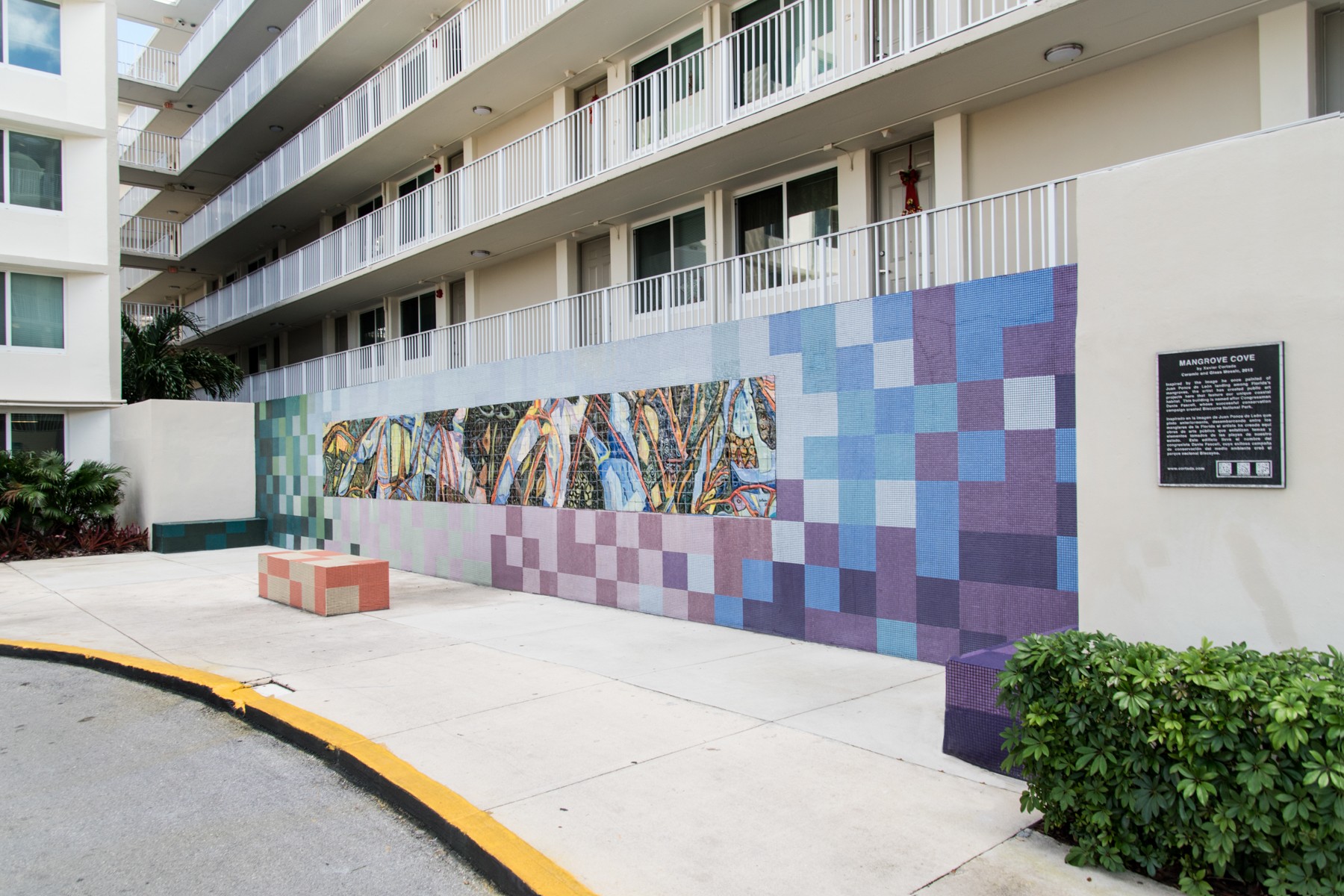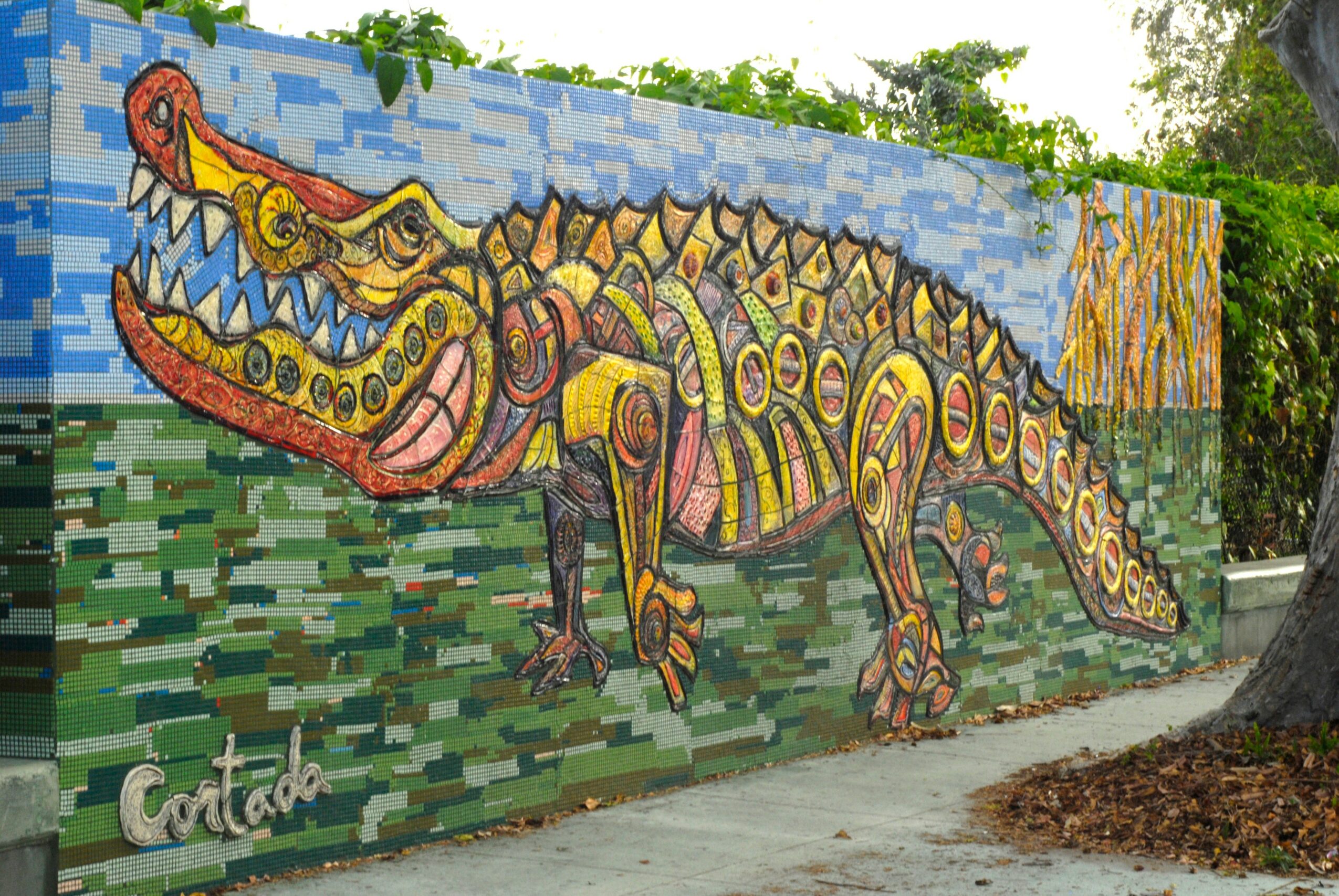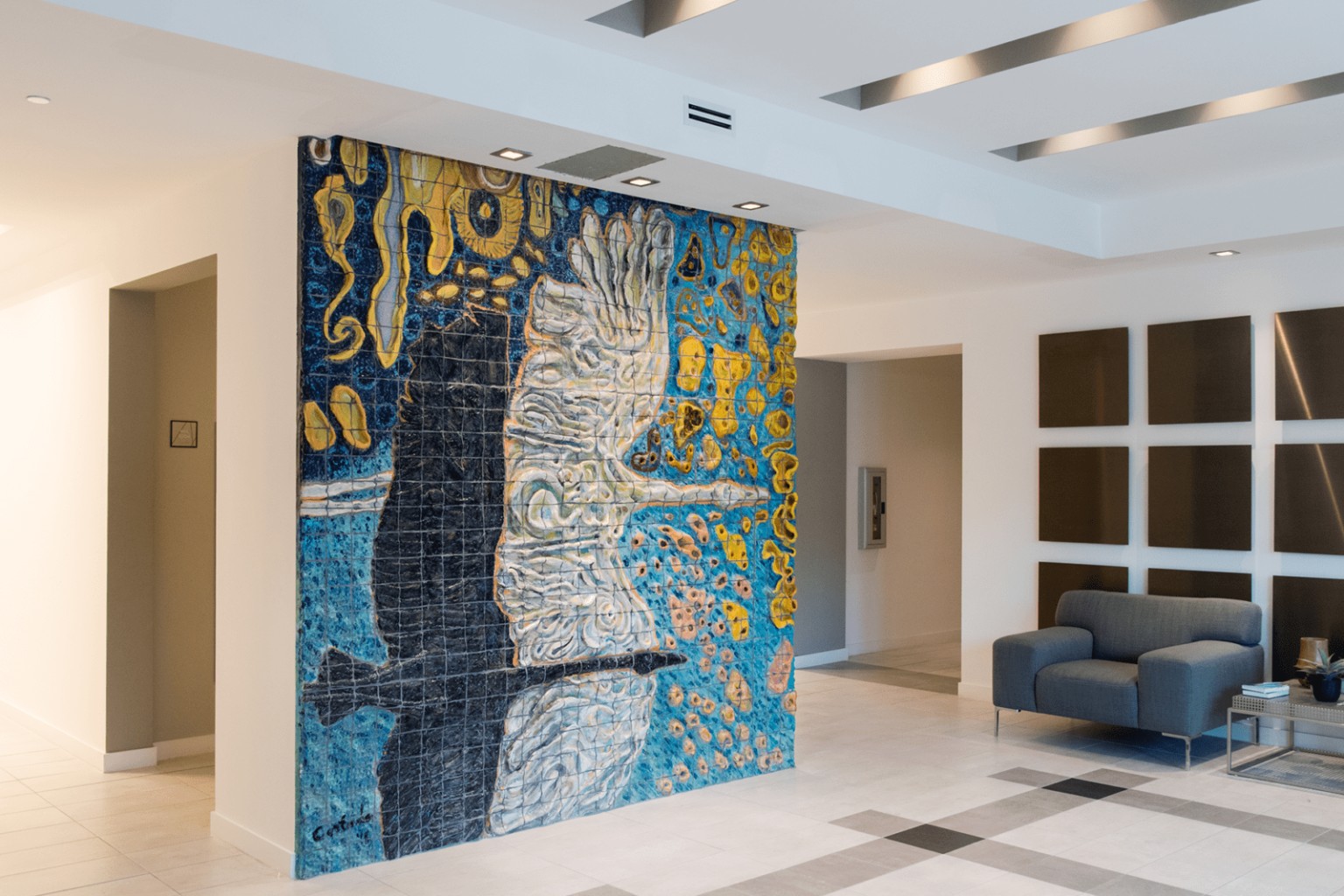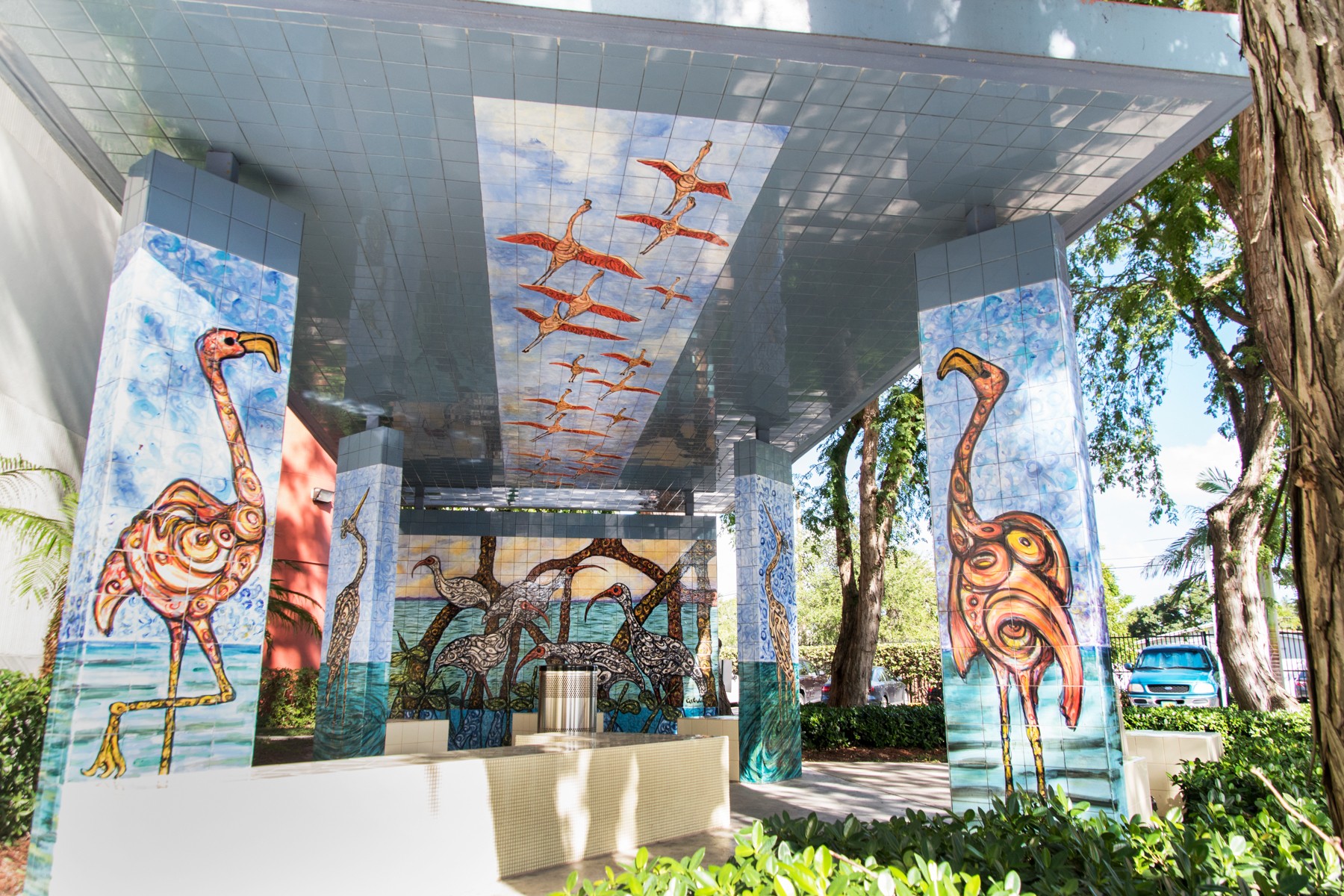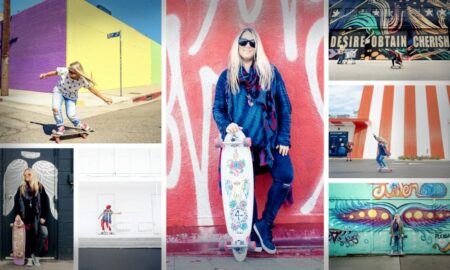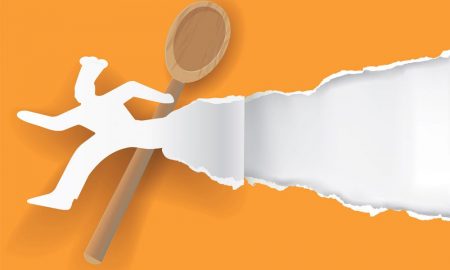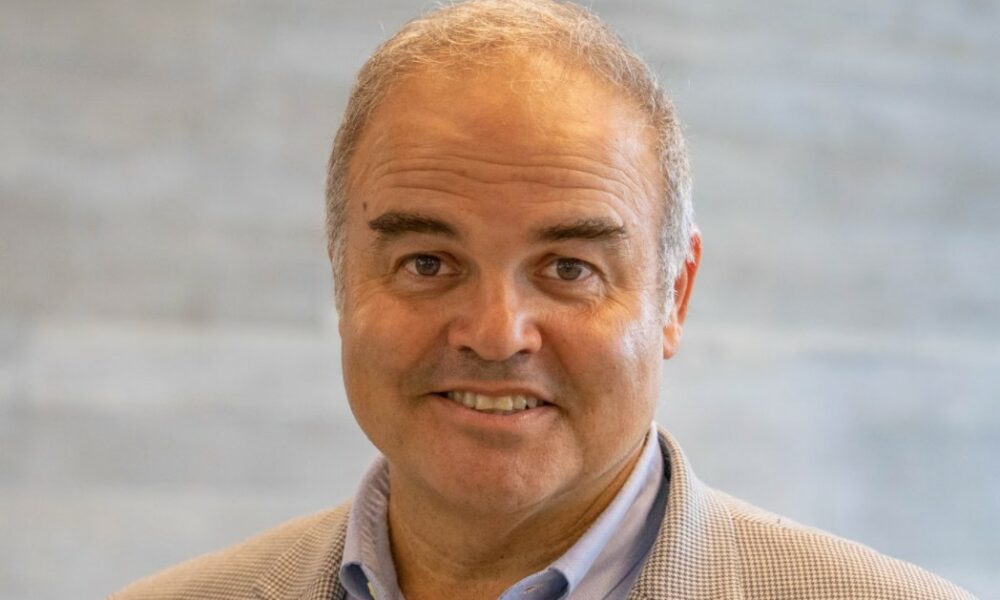

Today we’d like to introduce you to Xavier Cortada. They and their team shared their story with us below:
Xavier Cortada is a socially engaged artist. The crux of his work finds itself rooted in a deep conceptual engagement of his participants. Particularly environmentally focused, the work Cortada develops is intended to generate awareness and action toward issues of global climate change. The Cuban-American artist was born in Albany, New York in 1964 and from the age of three grew up in Miami, Florida.
He holds three degrees from the University of Miami: Bachelor of Arts, College of Arts and Sciences (1986), Master of Public Administration, Miami Herbert Business School (1991), and Juris Doctor, School of Law (1991). As an emerging artist in the 1990s, Cortada often partnered with local non-profit organizations to engage, educate and empower community members around solving local problems.
Primarily focused on issues such as mental health, drug abuse, and youth gang violence, the artist worked to find creative ways of providing a sense of agency and amplifying marginalized voices. During that time, Cortada also volunteered with U.S. embassies across four continents to produce numerous collaborative art projects, including peace murals in Cyprus and Northern Ireland, child welfare murals in Bolivia and Panama, AIDS murals in Switzerland and South Africa, and juvenile justice murals in Miami and Philadelphia. He completed this work with the support of various entities, including the U.S. State Department and USAID.
For this work, Cortada has been the recipient of numerous awards including the “Millennium International Volunteer Award” from the U.S. Department of State & USA Today and the “Florida International Volunteer Corps 1999 Outstanding Achievement Award.” In February 2000, invited by the Holy See, Cortada traveled to the Vatican to participate in the Jubilee Day for Artists and meet Pope John Paul II. That summer, he was invited to Washington, D.C. to create a collaborative mural for the White House Conference on Minority Homeownership with President Bush as one of the participants.
In 2006, the Child Welfare League of America (CWLA) honored him with the coveted “Champion of Children Award” in Washington, D.C. Inspired by his 2003 “Florida Mangrove” Hispanic Heritage Mural (which Governor Bush unveiled at the Capitol), Cortada led 800 volunteers in painting the “Miami Mangrove Forest” in 2004. A metaphoric reforestation of downtown Miami, they painted Cortada’s images of mangrove seedlings on dozens of columns beneath I-95, each seedling functioning as a visual metaphor of the immigrant: floating to a new shore, putting down roots and contributing to a fertile new home community.
Two years later, he launched the “Reclamation Project,” asking volunteers to create vertical gardens (grid-like installations of mangrove seedlings in clear, water-filled cups dangling on retail windows) across Miami Beach’s Lincoln Road and then planting them along Biscayne Bay. This effort pioneered eco-art in South Florida and launched Cortada’s eco-art practice. These successful habitat restoration activities continue today through the Frost Science Museum’s Museum Volunteers for the Environment (MUVE) program.
Since the inception of the “Reclamation Project,” over 8,000 volunteers have restored more than 25 acres of coastal habitats. An iteration of this project focused on planting salt-tolerant trees inland in preparation for saltwater intrusion, “Plan(T),” saw eco-art installations and programming in all 45 of Miami-Dade County’s public libraries and dozens of schools. The culmination of these efforts recently earned Cortada the Environmental Law Institute’s 2021 “Wetlands Hero Award.”
Cortada, the son of Cuban refugees, worked to shed light on the cruelty of Cuba’s authoritarian regime and share the stories of exiles by creating a Cuban monument to freedom in 2004. The “Painted Cuban Plane & Freedom Luggage Installation” features his painting on a Russian Antonov-2 Colt airplane that brought a family from Cuba to the United States and was confiscated from the Cuban government by U.S. Marshals.
In this work, Cortada presented 45 pieces of luggage numbered sequentially from 1959 to 2004, representing every year since the beginning of the Cuban diaspora. Each painted suitcase included letters from exiles describing what they left behind in Cuba and what they found when they arrived in America.
As a National Science Foundation Antarctic Artists and Writers Program Fellow, Cortada traveled to the South Pole in 2007 to create a series of new works addressing humanity’s interconnectedness with the natural world. Using the moving ice sheet that blankets the South Pole as an instrument to mark time, the artist created “The Markers” and “150,000-year Journey,” projects that juxtapose human and geologic time frames, explore the evolution of human civilization, and invite reflection on the role of individuals as custodians of the planet.
With the support of scientists stationed in Antarctica, Cortada used sea ice, glacier, and sediment samples to create a series of “ice paintings.” These works aimed to draw attention to the fragility of the Western Antarctic Ice Sheet and the vulnerability of coastal communities to the threat of sea level rise. Cortada also placed 24 identical shoes in a circle around the South Pole, each serving as a proxy for someone impacted by climate change in one of the world’s 24 time zones. He recited their quotes in a ritualistic performance, the “Longitudinal Installation,” conceptually bringing global strangers together to share their climate stories at a place where all longitudes converge.
In 2008, as a New York Foundation for the Arts Sponsored Artist, Cortada traveled to the North Pole and became the only artist to create works at both of the Earth’s poles. While there, he planted a green flag to reclaim the world below for nature and launched “Native Flags,” a global reforestation campaign that mobilizes neighbors to rebuild native ecosystems.
Since 2009, local students from every one of Miami-Dade County’s 300+ public schools have annually planted a native tree and green project flag on school grounds to celebrate Earth Day, effectively empowering thousands of students and teachers to regrow their community’s native tree canopy. Importantly, the participatory art project made it to the steps of the U.S. Capitol when then Congresswoman Ileana Ros-Lehtinen delivered Cortada’s Native Flag to every one of her 435 colleagues in Congress and asked them to plant the green flag and a native tree in their respective districts across the country.
Cortada’s practice dove further into collaborations with scientists in 2010 as he worked with population geneticist Spencer Wells and National Geographic on a project exploring humanity’s ancestral journeys within and out of Africa 60,000 years ago and molecular biologist Dr. Kalai Mathee to synthesize an actual DNA strand made from a sequence randomly generated by 400 participants visiting his museum exhibit, a project featured in the academic journal, Science. At CERN in 2013, Cortada worked with physicist Pete Markowitz to develop a site-specific art installation capturing the five search strategies which the CMS experiment used to discover a new Higgs-like particle, referred to as the “God particle.”
The five large banners hang at the very location where the particle was discovered. Cortada also served as artist-in-residence and on the Committee of Scientists at Hubbard Brook Experimental Forest, the site of acid rain’s discovery, where he worked with scientists in developing a water cycle visualization project driven by real-time data collected at a watershed in New Hampshire’s White Mountains.
To commemorate Florida’s quincentennial in 2013, Cortada launched a participatory art, nature, and history project known as “FLOR500.” Utilizing his role as faculty and artist-in-residence at Florida International University, he partnered with the Florida Department of State, the Museum of Florida History, local history museums, libraries, and state universities across the state to bring the effort to life: Cortada invited 500 Florida artists to paint 500 native wildflowers selected by botanists from across the state. He asked historians to select 500 people who helped shape Florida’s history and 500 gardens were planted in their memory.
Through this effort, Cortada engaged thousands of Floridians in reflecting on those who have shaped Florida’s history and in helping to shape Florida’s future by regrowing the critically important wildflowers that the state was named after. His “FLOR500” exhibitions took him across Florida from Amelia Island to Panama City, from Ft. Myers to Titusville, and from Gainesville to Miami. The work is now in the permanent collection of the Patricia and Phillip Frost Art Museum in Miami.
Throughout his career, Cortada has created dozens of public artworks that range from free-standing and suspended sculptures to ceramic tile murals, as well as mosaics, paintings, and large-scale digital works. In 2015, he created permanent art installations in three Florida Turnpike plazas, each focused on a different aspect of the sunshine state’s natural beauty: endangered animals (Ft. Drum Plaza), sunshine (Turkey Lake Plaza), and wildflowers (West Palm Beach Plaza).
Cortada has been commissioned to create art for the World Bank, Miami City Hall, Miami-Dade County Hall, Miami-Dade Housing Authority, the Frost Science Museum, Museum of Florida History, Florida Botanical Gardens, and the Patricia and Phillip Frost Art Museum. Cortada’s art is also in the permanent collection of various museums, including the Peréz Art Museum Miami, NSU Museum of Art, Whatcom Museum, Frost Art Museum, and MDC Museum of Art + Design.
To make sea level rise impossible to ignore during Art Basel 2018, Cortada partnered with the Village of Pinecrest, a municipality within Miami-Dade County, to create the “Underwater Homeowners Association.” Using an app, residents discovered their property’s elevation above sea level and then installed an ‘Underwater Marker’ (a yard sign that has the number depicting their house’s elevation) in their front yard. In addition to the personalized signs, Cortada worked with local public high schools to paint elevation murals on four major intersections along Pinecrest’s Killian Drive, temporarily renamed “Elevation Drive.”
Cortada’s “Antarctic Ice Paintings” served as the backdrop to the signs and murals, both working to grab the attention of passersby and spark conversations about rising seas. This initiative received international recognition including media coverage from the New York Times, Washington Post, Miami Herald, CNN, BBC, NPR, Forbes, and the Associated Press, among others.
Cortada’s leadership extends beyond his art projects. In 2005, he was appointed to the Miami-Dade Cultural Affairs Council, where he served from 2005 to 2020 – his last two years as Chairman, the first artist ever in that role. At the state level, he was appointed by the Florida Speaker of the House to serve on the Florida Arts Council. He served from 2008 to 2012 – his last two years as Vice Chair. At the national level, Cortada served as a board member of South Arts from 2016 to 2019.
Painting Constitutional Law: Xavier Cortada’s Images of Constitutional Rights is a book published by Brill in 2021 in which scholars of constitutional law analyzed ten of Cortada’s paintings and the landmark U.S. Supreme Court cases that he portrayed in each. The contributing scholars from across the United States described the law surrounding the cases and discussed how Cortada captured those foundational decisions, their people, and their events on canvas, effectively exploring new connections between contemporary art and constitutional law.
Created for a 2004 solo exhibition in the rotunda of the Supreme Court of Florida, the works are now on long-term loan to the Florida International University College of Law. Currently, Cortada serves as a professor of practice at the University of Miami Department of Art and Art History (with secondary appointments in the University’s School of Law and its Miller School of Medicine Department of Pediatrics).
In this role, he co-leads an interdisciplinary research team studying climate migration and retreat in South Florida and the Caribbean basin. In 2020, he served as Principal Investigator for the “Miami Corona Project,” a socially engaged art project created to assess and address the coronavirus pandemic in Miami, presented as part of the University of Miami’s COVID-19 Rapid Response effort.
Through the School of Law, Cortada traveled to Glasgow, Scotland as an official observer of COP26 (2021 United Nations Climate Change Conference) where he engaged delegates with “HELLO,” an interactive art project that challenged participants to reframe the way they saw one another and their collective vulnerability to climate change. The artist received a 2022 Creative Capital Award to support his newest socially engaged art project, “The Underwater,” which he began implementing in Miami’s Little Havana neighborhood with over 2,000 students from his alma mater, Miami Senior High School.
In August 2022, Mayor Daniella Levine Cava appointed Cortada as the inaugural artist-in-residence for Miami-Dade County to grow a cadre of creative problem-solvers, driven by empathy and love of community. He has also been selected to speak at the October 2022 TED Countdown in London, England about using socially engaged art to pique curiosity, provide moments of experiential learning, and ultimately mobilize people around the climate crisis.
Thanks – so what else should our readers know about your work and what you’re currently focused on?
Xavier Cortada, Miami’s pioneer eco-artist, uses art’s elasticity to work across disciplines to engage communities in problem-solving. Particularly environmentally focused, his work intends to generate awareness and action around climate change, sea level rise, and biodiversity loss.
Over the past three decades, the Cuban-American artist has created art at the North and South poles and across 6 continents, including more than 150 public artworks, installations, collaborative murals, and socially engaged projects. He has been commissioned to create art for CERN, the White House, the World Bank, the Florida Turnpike, Port Everglades, and Miami City Hall, among many other art, science, and government venues.
Cortada, who serves as the inaugural Artist-in-Residence for Miami-Dade County, received a 2022 Creative Capital Award and a 2021 National Wetlands Award from the Environmental Law Institute. Other accolades include Home & Away Residency, Anderson Ranch, Aspen, Colorado (2022); Grist 50 (2022); New York Foundation for the Arts fiscally-sponsored artist (2008 and 2019); Rauschenberg Residency: Rising Waters Confab, Captiva, Florida (2015); and the National Science Foundation Antarctic Artists & Writers Program, South Pole (2006-2007). In October 2022, Cortada delivered a TED Talk entitled “A creative approach to community climate action” which has garnered over 650,000 views.
The artist has exhibited and produced works internationally, including peace murals in Cyprus and Northern Ireland, child welfare murals in Bolivia and Panama, AIDS murals in Switzerland and South Africa, and eco-art projects in Holland, Scotland, and Taiwan. Cortada’s work is in the permanent collections of the Perez Art Museum Miami (PAMM), the NSU Museum of Art Fort Lauderdale, the Whatcom Museum, the Patricia and Phillip Frost Art Museum, and the MDC Museum of Art + Design, among others.
Cortada, who was born in Albany, New York, grew up and lives in Miami, Florida. He received bachelor, master’s, and law degrees from the University of Miami, where he currently serves as a professor of practice at the University of Miami Department of Art and Art History with secondary appointments in the School of Law and Miller School of Medicine Department of Pediatrics.
Is there anyone you’d like to thank or give credit to?
Many people have helped to get me to where I am today. Mayor Daniella Levine Cava and I have known each other since 1992 and have worked together to help address the problems facing our community. I’m honored that she appointed me as Miami-Dade County’s inaugural artist-in-residence. In this role, I’ve had the opportunity to use my creativity to capture and amplify the voices of our residents through the “How We Thrive” and “Hometown Heroes” collaborative message murals.
The leadership in the Village of Pinecrest has invested in me by providing me the opportunity to be the Pinecrest Gardens artist-in-residence since 2017. Having a studio there has allowed me to create countless artworks, from paintings to ceramic tile murals. Most of all, I’ve been inspired by the members of this community as they motivate me to be the best version of myself every single day.
Contact Info:
- Website: www.cortada.com
- Instagram: https://instagram.com/xcortada
- Facebook: https://facebook.com/xcortada
- Linkedin: https://www.linkedin.com/in/cortada/
- Twitter: https://twitter.com/xcortada
- Youtube: youtube.com/@xaviericortada
